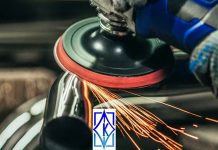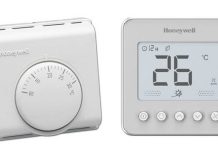Author: Reza Hajiha: Senior Electrical Engineer وSharif University of Technology
Introduction
An offshore installation is divided into regions or zones depending on the likelihood of an explosive gas/air mixture developing. These zones may be hazardous or non- hazardous and their location will be clearly marked on a general arrangement drawing of the installation which can be found in the statutory operation manual.

- NON-HAZARDOUS AREA
Non-hazardous or safe areas are those locations where explosive hydrocarbon mixtures are not expected to occur in sufficient quantities to present a hazard.
It should be noted that it is a requirement for all accommodation spaces to be located in a safe area.

- HAZARDOUS AREAS
Hazardous areas are sub-divided into 3 categories as below:
1) Zone O – an area in which an explosive gas/air mixture is continuously present, or present for long periods.
It is unlikely that a Zone O are would be encountered offshore and should it exist then all electrical equipment should be excluded. Where this is impractical, intrinsically safe components may be used.
2) Zone 1 – an area where an explosive gas/air mixture is likely to occur during normal operating condition.
Such regions occur around flare booms and vent stacks. If a circle is drawn with its centre at the gas source and with a radius of 15 meters (50 feet), then all regions within this circle will be classed as
Zone 1. The zone will extend vertically upwards a distance of 3 meters (10 feet) and vertically downwards to the sea level for gases which are heavier than air such as methane, the primary constituent of natural gas.
All electrical cables should be protected with a metallic sheath with the addition of a non-metallic impervious sheath.
All electrical equipment within. a Zone 1 area should be suitably certified. All electrical cables should be protected with a metallic sheath with the addition of a non-metallic impervious sheath.
It is permissible to use non-certified equipment in a Zone 1 area provided that the equipment is located within a positively pressurized (5 mm water gauge) compartment which is ventilated with air supplied from a safe area. An interlock must be fitted which will deenergise all uncertified electrical equipment and initiate an alarm in the main control room if a failure of the pressurization occurs. Under these circumstances the compartment can be considered to be a safe area.
All doors leading from a Zone 1 area into a non-hazardous area should be fitted with an airlock. If this is not practical then the heating, ventilation and air-conditioning (HVAC) system should be fitted with a standby fan which will start automatically on loss of pressurization.
Gas processing areas, wellheads and parts of the drill floor are all normally classed as Zone 2 areas and all electrical and mechanical equipment should be suitably certified.
3) Zone 2 – an area where an explosive gas/air mixture is not likely to occur, and if it does, will only exist for a short period of time.
Gas processing areas, wellheads and parts of the drill floor are all normally classed as Zone 2 areas and all electrical and mechanical equipment should be suitably certified.

The hazardous area is normally considered to extend a horizontal distance of 7.5 meters (25 feet) from gas handling equipment and vertically downwards to the sea level.
Some latitude exists as to the determination of hazardous area boundaries depending on which guidelines a company has based its philosophy. New installations should comply with BS 5345 Part 2 Classification of Hazardous Areas. Older installations tended to use the Institute of Petroleum Model Code of Safe Practice, Part 1 1965.
Open deck areas of North Sea installations are well ventilated by prevailing winds and natural droughts which prevent the buildup of large quantities of gas. All distances so far quoted for hazardous area boundaries are based on these open deck conditions. Enclosed areas must be considered separately because of the possibility of a buildup of gas occurring.
- ENCLOSED COMPARTMENTS – ZONE 2 AREAS
An enclosed area in which it is possible for an explosive gas/air mixture to develop under abnormal conditions must be classed as Zone 1. In addition the surrounding areas for a distance of 7.5 meters (25 feet) will be considered to be a Zone 2 area.
The enclosed area may be considered a safe area if it is suitably ventilated and pressurized (5 mm water gauge).
An enclosed area which does not contain a source of hazard must be classed as a Zone 1 area unless suitable ventilation and pressurization systems are fitted.
It is recommended that all access points which either:
1) Lead from a Zone 1 area into a Zone 2 area or,
2) Lead from a Zone 2 area into a non-hazardous area, Should be constructed with a two door airlock. If this is impractical, gas tight self-closing doors must be fitted.
All doors leading from a safe area to a hazardous area should bear the legend HAZARDOUS AREA in letters approximately 50 mm (2 inch) in height.
- EQUIPMENT IDENTIFICATION
It is a requirement that all electrical equipment installed within hazardous areas should be certified as suitable for the location. This certification will be issued by BASEEFA (British Approval Service for Electrical equipment in Flammable Atmospheres) as a result of type approval tests that they have carried out on each component. An identification plate attached to the component will provide information as to the suitability of the equipment for installation in a particular environment.
Equipment should be selected in accordance with the following reference guides.
4.1. LOCATION
- a) Zone 0 :Preferably no electrical equipment. If fitted it must be:
Intrinsically safe Ex ia
Specially Certified for Zone 0 Ex s
- b) Zone 1: All equipment suitable for Zone 0 areas, and:
Special apparatus Ex s (specially certified)
Flameproof Exd
Intrinsically safe Exib
Pressurized Exp
Increased safety Ex e
Encapsulation Exm
- c) Zone 2: All equipment suitable for Zone 0 and Zone I, and:
Non-incendive
Oil immersed
Powder/Sand filled
4.2. TEMPERATURE RATING
Ex N or n
ExO
Exq
Hazardous area equipment will also display identification as to its suitability for use at elevated temperatures (over 40 deg. C ambient) and with various gases.
Temperature Selection (Temperatures in 0c)
T1 450 T4 135
T2 300 T5 100
T3 200 T6 85
Gas Types
Methane I
Propane IIA
Ethylene IIB
Hydrogen IIC
An example, a piece of equipment marked as Ex d II B T5 would be suitable for use with flammable gases such as Ethylene, Propane and Methane provided that the ignition temperate of any gas to be used is not less than 100°C (T5).
4.3. INGRESS PROTECTION (IP)
The IP ratings system has been included in this chapter for general information only. It does not apply to hazardous area equipment because of the limited protection offered. It will, however, be frequently encountered offshore on items of equipment such as junction boxes.
Two numbers are used. The first number indicates protection against solid bodies, whilst the Second number indicates protection against liquids, e.g., IP 54, protected against dust and splashed water.
0 No protection 0 No protection
1 Objects > 50 mm 1 vertically dripping water
2 Objects > 12 mm 2 75-90° angled dripping water
3 Objects > 2.5 mm 3 Sprayed water
4 Objects > 1.0 mm 4 Splashed water
5 Dust-protected 5 Water jets
6 Dust-tight 6 Heavy seas
7 Effect of immersion
8 Indefinite immersion
REFERENCE STANDARDS
- Department of Energy Offshore Installations: Guidance on Design Construction and Certification.
- BS 5345 Classification of Hazardous Areas and Selection of Equipment for use in Hazardous Areas.
- Institute of Petroleum Code of Safe Practice Part 1, 1965.
- BS 4683 Electrical Apparatus for Explosive Atmospheres.
- BS 5501 Electrical Apparatus for Potentially Explosive Atmospheres.
- BS 4137 Guide to Selection of Equipment for use in Division 2 Areas.
- BS 5490 Specification for Degrees of Protection Provided by Enclosures.
- API RP 500 Recommended Practice for Classification of Areas for Electrical Installations at Drilling Rigs on Land and on Marine, Fixed and Mobile Platforms.

رضا حاجیها- کارشناس ارشد برق – دانشگاه صنعتی شریف

















